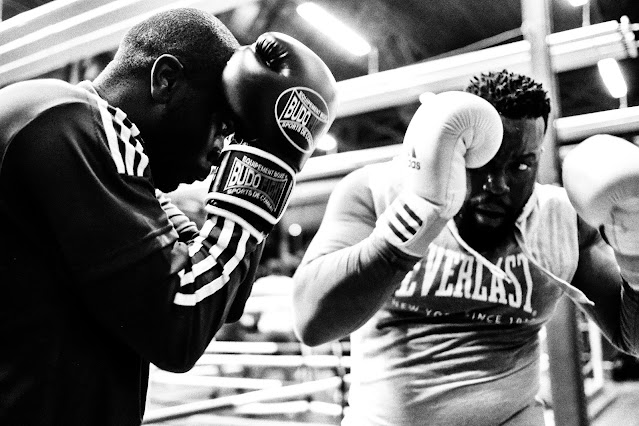How to train with boxing pads?
Boxing pad training is an effective and exhilarating way to improve your boxing skills, build strength, and enhance your overall fitness level. Whether you're a beginner or an experienced boxer, incorporating boxing pad work into your training routine can yield impressive results. In this guide, we will explore the fundamental boxing pad work drills for beginners, discover various training combinations, learn how to perform boxing pad workouts at home, explore cardio and boxing HIIT workouts with pads, and uncover the numerous benefits of boxing pad training. Get ready to unleash your inner champion!
Boxing Pad Work Drills for Beginners
Boxing pad work drills are essential for beginners as they lay the foundation for proper technique and skill development. Here are a few drills to get you started:
Jab-Cross Drill: Begin with your coach or training partner holding the pads at chest height. Throw a jab with your lead hand followed by a cross with your rear hand. Focus on maintaining proper form and accuracy.
Hook-Uppercut Drill: Practice your hooks and uppercuts by targeting the pads at various heights. Start with a left hook followed by a right uppercut, and then switch to the opposite side.
Slip and Counter Drill: This drill helps improve your defensive skills. Move your head side to side to avoid imaginary punches while simultaneously countering with quick jabs or crosses.
Boxing Pad Training Combinations
Once you have mastered the basic drills, you can progress to more complex combinations. These combinations allow you to work on fluidity, speed, and accuracy. Here are a few examples:
Jab-Cross-Hook: Throw a jab, cross, and then follow up with a left hook. This combination helps improve coordination and power.
Double Jab-Rear Uppercut-Cross: Start with two jabs, then perform a rear hand uppercut, and finish with a cross. This combination emphasizes speed and precision.
Lead Hook-Rear Hook-Cross: Practice a lead hook, followed by a rear hook, and conclude with a cross. This combination enhances your ability to generate power from different angles.
Boxing Pad Workout at Home
Not everyone has access to a boxing gym or a training partner. However, you can still enjoy the benefits of boxing pad training from the comfort of your own home. Here's how:
Shadow Boxing with Imaginary Pads:
Visualize having pads in front of you and perform various combinations. Focus on technique, speed, and footwork.
Reflex Ball Pad Workout:
Attach a reflex ball to a string and have it rebound off a wall or a sturdy surface. Incorporate your pad work combinations while reacting to the ball's movements.
Boxing Pad Training Apps:
Utilize smartphone apps that provide virtual pad work drills and combinations. These apps can guide you through workouts and provide real-time feedback on your technique.
Boxing Pad Drills for Cardio and Boxing HIIT Workout
Boxing pad drills offer an intense cardio and HIIT (High-Intensity Interval Training) workout. Here's how you can incorporate them into your training routine:
Tabata Boxing Pad Workout:
Perform high-intensity pad work for 20 seconds, followed by 10 seconds of rest. Repeat this cycle for 4 minutes, incorporating a variety of combinations.
Circuit Training:
Set up multiple stations with different boxing pad drills. Spend a specific amount of time at each station before moving to the next. This method keeps your heart rate elevated while targeting different muscle groups.
Boxing Pad Work Benefits
Boxing pad work provides numerous benefits, including:
Improved Technique and Accuracy: Regular training with boxing pads helps refine your technique, hand-eye coordination, and punch accuracy.
Increased Stamina and Endurance: The high-intensity nature of boxing pad workouts improves your cardiovascular fitness, stamina, and endurance.
Full-Body Workout: Boxing pad training engages your entire body, toning muscles, and burning calories effectively.
Stress Relief: Hitting pads can be a great outlet for stress and frustration, promoting mental well-being.
Enhanced Reflexes and Speed: Pad work drills improve your reaction time, agility, and overall speed.
FAQs
How do you practice boxing with pads?
To practice boxing with pads, you need a training partner or coach who holds the pads. They will call out combinations, and you'll throw punches at the pads, focusing on technique, accuracy, and speed.
How do I get better at boxing on pads?
To improve at boxing on pads, practice regularly, focus on proper technique, and gradually increase the intensity. Work on speed, accuracy, and fluidity of combinations. Seek feedback from your coach or training partner to make necessary adjustments.
How do you train someone with boxing mitts?
When training someone with boxing mitts, the trainer holds the mitts in specific positions to simulate punches. The trainee throws punches at the mitts, following the trainer's instructions for combinations, speed, and accuracy.
How do you train with a punch bag?
Training with a punch bag involves striking the bag with punches and kicks to improve technique, power, and stamina. Incorporate various combinations, footwork, and defensive movements. Start with light strikes and gradually increase intensity as you progress.
Can punching a bag build muscle?
Yes, punching a bag can help build muscle. The repetitive motion of punching engages multiple muscle groups in the arms, shoulders, chest, back, and core. It can promote muscle growth, strength, and endurance when combined with proper nutrition and overall training regimen.
Do push-ups increase punching power?
Push-ups are a beneficial exercise for developing upper body strength, including the chest, shoulders, and arms. While they can contribute to overall upper body power, punching power is primarily generated through technique, coordination, and transferring force from the lower body. Combining push-ups with proper punching technique and overall strength training can help improve punching power.
Conclusion
Boxing pad training is an essential component of any boxer's training regimen, and beginners can reap its benefits as well. By incorporating the drills, combinations, and workouts discussed in this guide, you can enhance your boxing skills, improve your overall fitness, and experience the exhilaration of boxing firsthand. Remember to focus on technique, gradually increase the intensity, and always prioritize safety. So put on your gloves, find a partner or create a home setup, and start your journey towards becoming a skilled and fit boxer. Embrace the challenge and enjoy the rewards!
.jpg)
.jpg)


Comments
Post a Comment